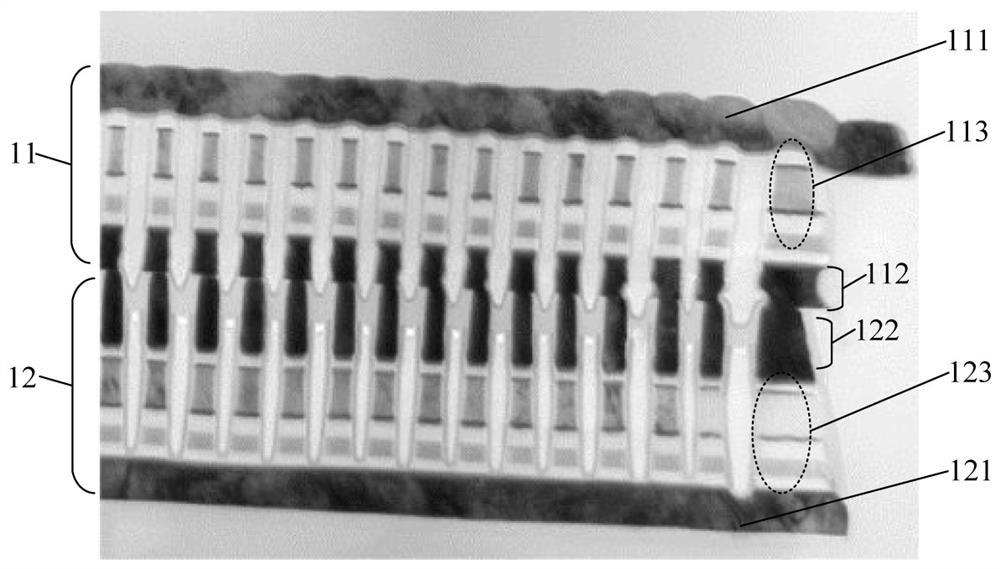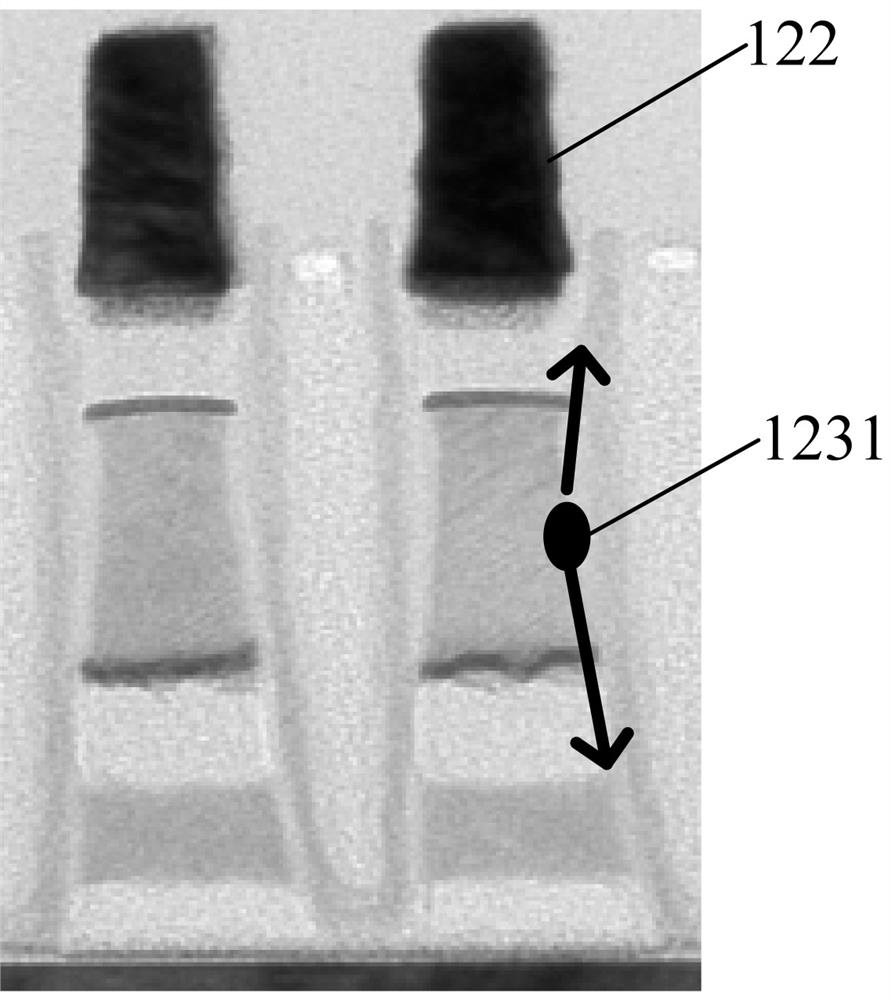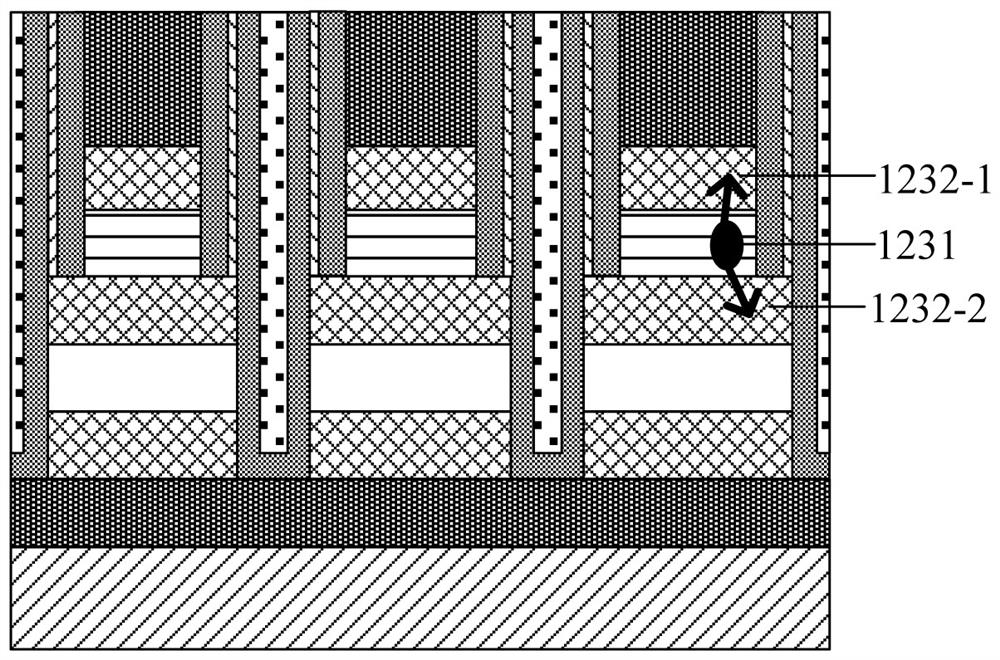Method for forming a semiconductor device and semiconductor device
A semiconductor and device technology, which is applied to the formation method of semiconductor devices and the field of semiconductor devices, can solve the problems of composition change, poor adhesion between electrodes and packaging layers, etc., to prevent diffusion, enhance adhesion, and prevent composition changes. Effect
- Summary
- Abstract
- Description
- Claims
- Application Information
AI Technical Summary
Problems solved by technology
Method used
Image
Examples
Embodiment 1
[0095] figure 2 A schematic flow diagram of the implementation process of the method for forming a semiconductor device provided in the embodiment of the present application, as shown in figure 2 As shown, the method includes the following steps:
[0096] Step S201, forming a semiconductor stack structure.
[0097] Figure 3A A schematic diagram of a three-dimensional structure of a semiconductor stack structure provided in an embodiment of the present application, Figure 3B A schematic cross-sectional structure diagram of a semiconductor stack structure provided in an embodiment of the present application, combined with Figure 3A with3B As shown, a semiconductor stack structure 31 is deposited on a substrate 30 .
[0098] Here, the substrate 30 is located at the bottom of the entire structure, and the material of the substrate can be selected from silicon (Si), silicon-germanium alloy (SiGe), silicon carbide (SiC), aluminum oxide (Al 2 o 3 ), aluminum nitride (AlN),...
Embodiment 2
[0111] Figure 4 It is a schematic diagram of the implementation flow of the method for forming a semiconductor device provided in the embodiment of the present application. In the embodiment of the present application, such as Figure 4 As shown, the method includes the following steps:
[0112] Step S401 , stacking and forming an intermediate electrode layer, a phase-change material layer and a top electrode layer sequentially from bottom to top to form the semiconductor stack structure.
[0113] Figure 5A A schematic diagram of a three-dimensional structure of a semiconductor stack structure provided in an embodiment of the present application, Figure 5B A schematic cross-sectional structure diagram of a semiconductor stack structure provided in an embodiment of the present application, combined with Figure 5A with 5B As shown, the semiconductor stack structure 50 at least includes: a top electrode layer 502-1, a phase change material layer 503 and a middle electrode...
Embodiment 3
[0139] Image 6 A schematic flow diagram of the implementation process of the method for forming a semiconductor device provided in the embodiment of the present application, as shown in Image 6 As shown, the method includes the following steps:
[0140] Step S601 , stacking and forming an intermediate electrode layer, a phase change material layer and a top electrode layer sequentially from bottom to top to form a semiconductor stack structure.
[0141] Here, the semiconductor stack structure is a stack structure with a certain number of layers formed on the substrate, Figure 7A A schematic diagram of a three-dimensional structure of a semiconductor stack structure provided in an embodiment of the present application, Figure 7B A schematic cross-sectional structure diagram of a semiconductor stack structure provided in an embodiment of the present application, combined with Figure 7A with 7B As shown, the semiconductor stack structure 70 at least includes: a top elect...
PUM
 Login to View More
Login to View More Abstract
Description
Claims
Application Information
 Login to View More
Login to View More - Generate Ideas
- Intellectual Property
- Life Sciences
- Materials
- Tech Scout
- Unparalleled Data Quality
- Higher Quality Content
- 60% Fewer Hallucinations
Browse by: Latest US Patents, China's latest patents, Technical Efficacy Thesaurus, Application Domain, Technology Topic, Popular Technical Reports.
© 2025 PatSnap. All rights reserved.Legal|Privacy policy|Modern Slavery Act Transparency Statement|Sitemap|About US| Contact US: help@patsnap.com



